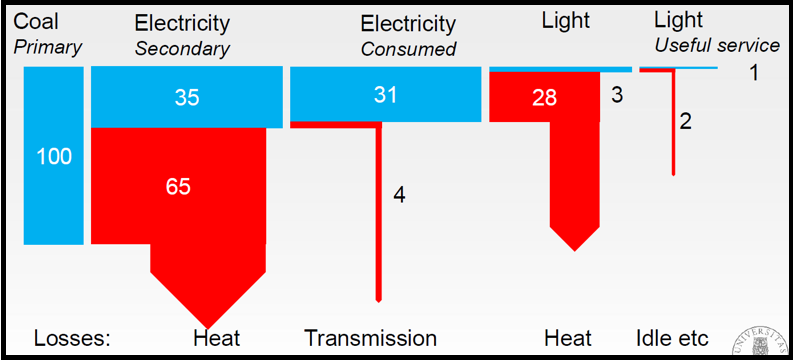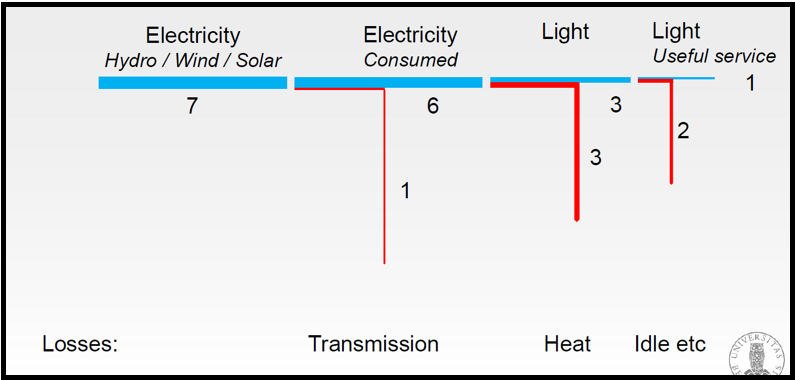Does the world really need more energy? - Professor Finn Gunnar Nielsen (GFI)
Access to clean and affordable energy is essential to eradicate poverty, end hunger and combat climate change, but do we need to change the way we think about energy?

Hovedinnhold
The demand for energy is increasing
The growth in primary energy demand has gone hand in hand with economic growth in the last decades. This trend is expected to continue, as the world population increases and more and more countries are lifted out of poverty and increase their standard of living.
In their World Energy Outlook (WEO) new policies scenario, the International Energy Agency (IEA) projects a 30 % increase in the world’s primary energy demand by 2040. Others, such as DNV GL in their Energy Transition Outlook (ETO), claim that the demand for primary energy will peak already in 2030, largely driven by electrification and increased energy efficiency.
Primary energy vs energy services
Professor Finn Gunnar Nielsen showed how reducing the demand for primary energy is possible with a very powerful example: the ordinary service of providing light. The Sankey diagrams to the right illustrate how providing light from a coal-fired power plant via an incandescent light bulb to useful light needs an energy ratio of 100:1 from primary energy to a useful service. Achieving the same service using renewables and a LED light bulb only requires an energy ratio of 7:1.
This shows that by switching from coal to renewables and by applying a more effective end-use technology, the primary energy demand is reduced 14-fold!
The unlimited potential of renewable energies
Installed capacities of solar and wind are growing every year. Through the year of 2017 about 75 GW of solar and 54 GW of wind capacity was installed worldwide. At the same time, costs are dropping and renewable energy technologies are increasingly competitive with fossil fuels. Solar and wind are becoming the cheapest generation technology alternative in more and more countries, even without subsidies.
Finn Gunnar also showed the massive potential for various renewable energy technologies, which exceeds the demand for energy multiple times. The intermittent nature of the solar and wind resource is, however, a challenge that needs to be resolved, possibly by the application of various energy storage technologies.
“150 000 wind turbines are needed to replace the energy in Norwegian gas export”
Finally, Finn Gunnar had also taken a closer look into some of the statements made by the CEO of Norwegian Oil and Gas, Karl Eirik Schjøtt Pedersen, at the conference “Vi må snakke om i morgen”.
Firstly, Schjøtt Pedersen claimed that Norway’s export of gas to the EU corresponds to ten times the Norwegian electric energy production. Second, we would need 150 000 wind turbines to replace the energy in this gas.
The statement in itself is correct. The energy content in the gas amounts to about 1250 TWh, which is about 10 times larger than the Norwegian power generation of 140 TWh. However, this is like comparing apples and oranges; we need to look where the gas is used to be able to compare it to electricity.
Using gas to generate electricity has an efficiency of maximum 50 – 60 %, whereas using gas for house heating has an efficiency of about 80 %. On the other hand, renewables (hydro, wind and solar PV), generate electricity directly (efficiency of 100 %), and through heat pumps they achieve house heating efficiencies of about 300 %. This results in a so-called primary energy factor of 2.5, i.e. we need 502 TWh of electricity to replace the 1254 TWh of energy embedded in the gas.
This brings us to the second statement. Assuming wind turbines have an average capacity factor of 0.4, 143 GW of installed wind power is needed to produce the 502 TWh/year of the electricity required to replace the gas exported from Norway each year. The next generation of wind turbines are at a size of approximately 10 MW – i.e. 14 300 wind turbines would be needed. This is 1/10 of what Schjøtt Pedersen claimed! With the present installation rate in the EU of 15 GW of wind capacity added per year; wind energy could replace Norwegian gas export as fast as in ten years.
Read more in Finn Gunnar's presentation below

